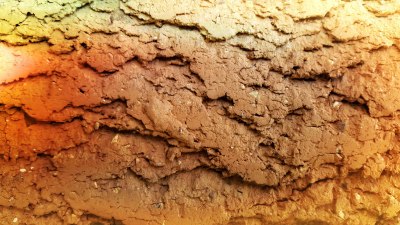How the Color of Soil Affects Local Weather Patterns
Explore the intriguing relationship between soil color and local weather patterns, including temperature and moisture.

The color of soil is more than just an aesthetic feature; it plays a significant role in influencing local weather patterns. Soil color is determined by various factors, including its mineral composition, organic matter content, and moisture levels. Understanding how soil color affects local climate conditions can provide valuable insights into agricultural practices, climate adaptation strategies, and the overall health of ecosystems.
Soil Color Classification
Soil colors can be classified into several categories, primarily based on their hue, value, and chroma. These attributes are influenced by the presence of minerals and organic substances. Common colors include brown, red, yellow, gray, and black. Each color indicates different soil characteristics, which subsequently affect its ability to retain heat, moisture, and nutrients. For example, darker soils, which contain more organic matter, tend to absorb more heat compared to lighter-colored soils, which can reflect sunlight. This difference in heat absorption can directly affect local weather patterns, altering temperatures and moisture levels.
The Role of Soil in Temperature Regulation
Soil color plays a critical role in temperature regulation. Darker soils, rich in organic matter and minerals, heat up more quickly during the day compared to lighter soils. This phenomenon affects not only soil temperature but also the temperature of the air above it. As dark soil absorbs heat, the surrounding air warms, which can lead to microclimatic changes in local environments. Conversely, light-colored soils reflect more sunlight, leading to cooler surface temperatures and potentially affecting local weather patterns through reduced evaporation rates and humidity levels.
The Impact of Soil Moisture
Soil color also influences moisture retention and the hydrological cycle. Dark soils, which generally have a higher organic matter content, are better at retaining moisture compared to lighter soils. This increased moisture retention can lead to higher humidity levels in the surrounding atmosphere. Consequently, areas with darker soils may experience more precipitation or even localized rain due to the increased evaporation from the soil surface and subsequent condensation in the atmosphere. In contrast, sandy, lighter-colored soils tend to drain quickly, resulting in lower moisture retention and potentially drier local climates.
Affect on Vegetation and Ecosystems
The interaction between soil color, climate, and vegetation is intertwined. Plants are crucial to local weather patterns, as they contribute to transpiration, the process through which water is evaporated from plant surfaces. Dark, nutrient-rich soils support lush vegetation, leading to higher rates of transpiration. This, in turn, increases humidity in the atmosphere and can influence local weather patterns, creating a feedback loop. In contrast, areas with light-colored, nutrient-poor soils may support less vegetation, leading to reduced transpiration and potentially drier conditions. Understanding these dynamics is essential for sustainable land management and conservation efforts.
Soil Color and Climate Change
In the context of climate change, soil color and its effects on local weather patterns take on added complexity. As climate variability increases, soil characteristics may change, affecting soil color and composition. For example, rising temperatures and altered precipitation patterns can lead to changes in organic matter levels and, thus, soil color. These changes can have cascading effects on local ecosystems, agricultural productivity, and water availability. Monitoring soil color and its implications can be a crucial aspect of adapting to climate change impacts.
Case Studies of Soil Color Influence
Several studies across different regions illustrate the impact of soil color on local weather patterns. In regions with predominantly black soils, such as the Chernozem soils found in Ukraine and parts of Russia, researchers have noted higher average temperatures and increased moisture retention, leading to more favorable conditions for agriculture. Conversely, regions with light-colored sandy soils, such as those found in parts of the southwestern United States, tend to experience higher evaporation rates and less moisture retention, resulting in arid conditions that challenge agricultural practices.
Another example can be found in tropical rainforests, where dark, organic-rich soils are associated with lush vegetation and high humidity levels. These conditions create microclimates that sustain diverse ecosystems, influencing rainfall patterns in surrounding areas. Such interactions underscore the importance of recognizing soil color as a significant factor in understanding local weather dynamics.
Practical Implications for Agriculture
For farmers and agricultural planners, the implications of soil color on local weather patterns can guide decisions about crop selection, irrigation practices, and land management strategies. Knowing that darker soils can retain more moisture might lead farmers to adopt water-saving irrigation techniques in regions with lighter soils. Additionally, awareness of local soil color can inform decisions about cover cropping and organic matter amendments, which can improve soil health and enhance its water and heat retention capabilities.
Furthermore, understanding the relationship between soil color and local weather can assist in predicting the risks associated with extreme weather conditions, such as droughts or floods. By integrating soil color analysis into agricultural planning, farmers can develop resilience strategies to buffer against climate-related challenges.
Soil Color and Urban Planning
Soil color also holds implications for urban planning and development. As cities continue to expand, understanding the effects of soil color can inform decisions related to landscape design, green infrastructure, and climate resilience. Urban areas with darker soils may benefit from increased vegetation and cooling effects, while areas with lighter soils may require increased vegetation to mitigate heat. These considerations are vital for creating sustainable urban environments that can adapt to changing climatic conditions.
In conclusion, the color of soil is a crucial component influencing local weather patterns. From its role in temperature regulation and moisture retention to its impact on vegetation and ecosystems, soil color shapes the microclimates that surround it. Additionally, as the world grapples with climate change, understanding the interplay between soil color and climate becomes essential for developing adaptive strategies in agriculture, urban planning, and conservation efforts. By appreciating the significance of soil color, we can take informed steps toward promoting ecological health and resilience in the face of changing environmental conditions.











